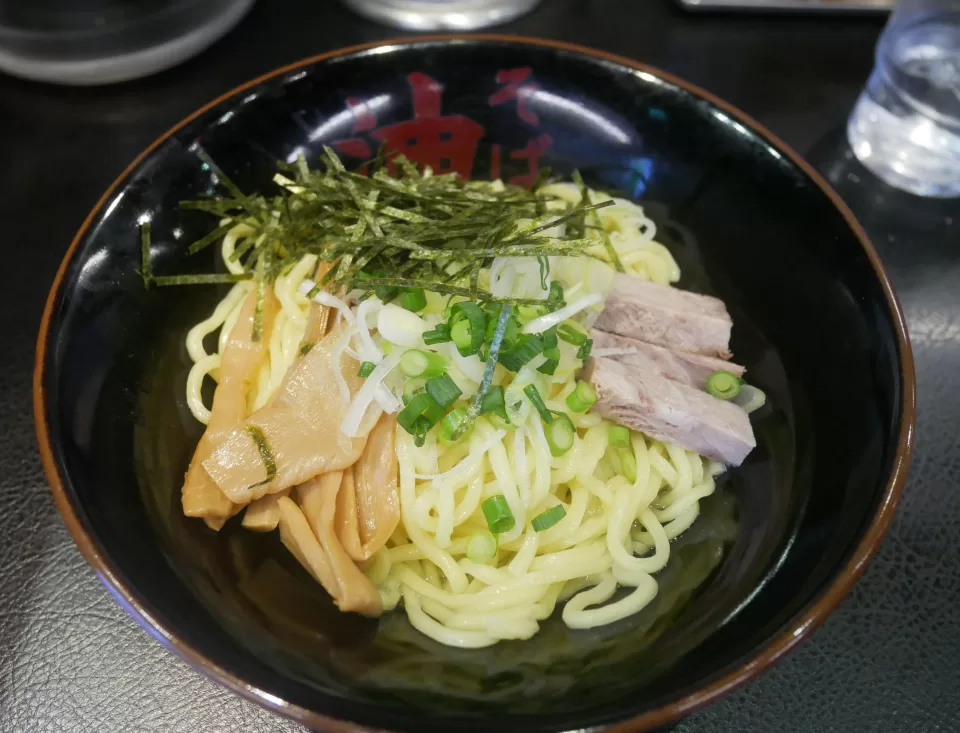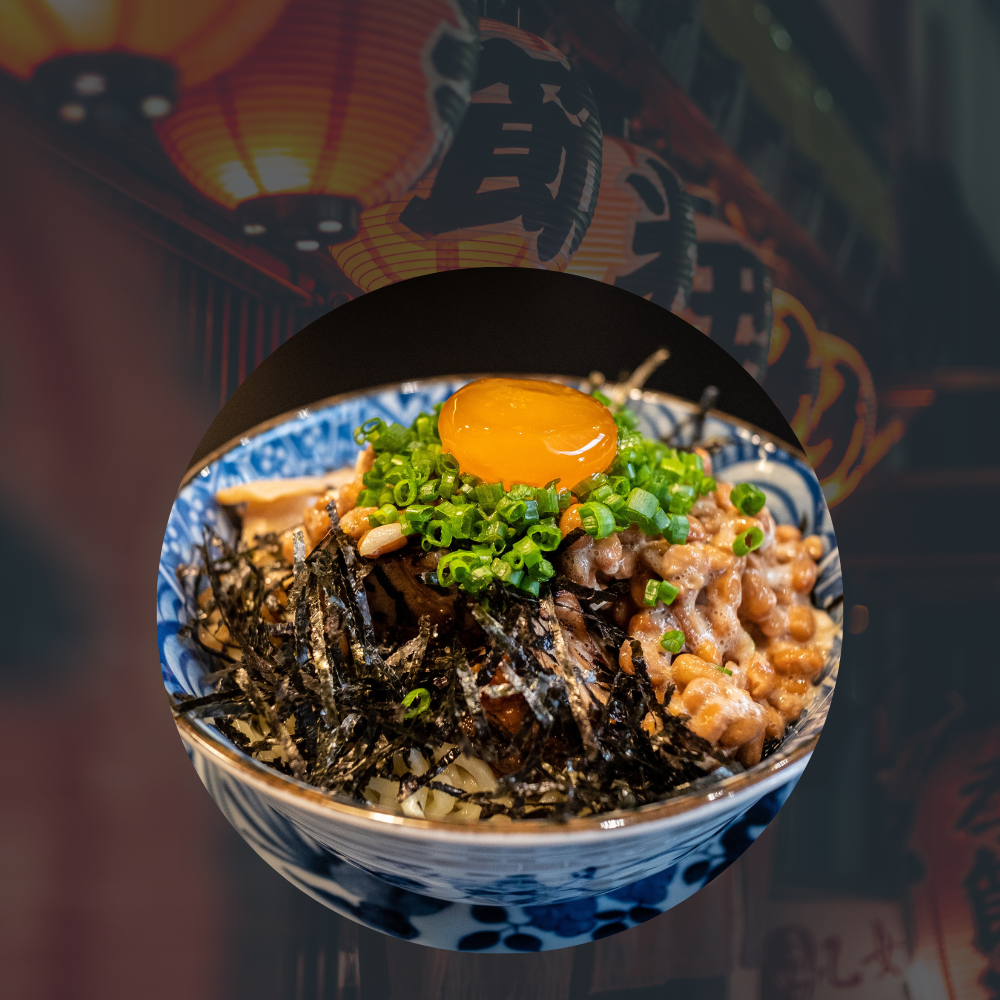Of all types of noodle dishes, ramen noodle recipes stand out with their rich, comforting flavors. Traditionally served in a deliciously savory broth, ramen dishes are renowned worldwide. However, an intriguingly delectable style of this dish has been gaining popularity: brothless ramen.

Brothless Ramen Recipe
Also known as mazemen or mazesoba, brothless ramen is a Japanese dish where the noodles are served in a flavorful sauce rather than being submerged in broth. This delightful alternative to soup-style ramen provides a bold punch of flavor, celebrating the essence of the carefully selected ingredients without the dilution effect that soup bases can sometimes create.
Spicy ramen without the broth and doused in an enriching sauce often referred to as ‘tare’, makes for a fantastic noodle dish. The term ‘mazesoba’ can be broken down into two parts: ‘maze’ meaning to mix and ‘soba’, typically referring to buckwheat noodles. Despite its name, this soba doesn’t always involve buckwheat noodles; wheat noodles are also widely used.

Styles of Broth-less Ramen
One popular variety of mazesoba includes abura soba, meaning ‘oil noodles’. Abura soba is essentially cooked noodles dressed with soy sauce, sesame oil, vinegar and optionally chili oil instead of a soup. Different from typical ramen recipes that use simmered meat or vegetable broth as a base, abura soba relies heavily on its sauce base for flavor.
Taiwan Mazesoba is another popular form of this ramen like dish utilizing thick, chewy stir-fried wheat noodles mixed with a plethora of toppings such as green onions, minced pork, raw egg yolk and seaweed. Termed as “Taiwan Ramen” due to its use of soy-based sauce similar to Taiwanese-style lu rou fan (braised pork rice), it isn’t necessarily related to Taiwanese cuisine but has developed its own place within the world of Japanese food.
Preparing Your Brothless Ramen Noodle Dish
Making your own bowl of mazemen or mazesoba can be exciting. Whether you opt for instant ramen noodles or fresh ones prepared from scratch, what remains constant across all variations is that each serving of noodles and sauce gets combined inside individual serving bowls before being topped with your desired ingredients.
Start by cooking your choice type of noodles in a pot of water until they’re just right – soft yet retaining some level of bite. Then drain them well ensuring there’s no excess water that may dilute your sauce.
For the sauce base itself – whether you’re making mazesoba or Taiwan-styled mazesoba – common ingredients include miso or oyster sauce, sesame oil, and soy sauce mixed together.
Next comes the cooking of meats – if you opt for any. Start off by cooking ground pork over medium heat, ensuring it cooks thoroughly.
As for toppings – sliced green onion, minced garlic, and ginger provide depth while elements like boiled eggs add texture. For those who prefer spicy ramen bowls, include spicy ground pork or chili oil into your mix.
Putting Your Dish Together
Before actually mixing these components together within individual bowls, it’s beneficial to first coat the cooked noodles with some butter or oil so they don’t stick together – especially if opting for mazesoba or Taiwan Mazesoba.
After placing your serving of cooked noodles into the bowl, pour over the flavor-packed sauce onto them. Then comes an optional step but highly recommended – topping it off with an egg yolk which will provide creaminess when mixed together.
Mix the seasoned pork and cooked noodles in the flavorful, buttery sauce before topping it off with your preferred choices – green onions for vibrancy and crunch; bamboo shoots for texture; nori seaweed sheets for an umami kick; boiled eggs or raw egg yolks for richness – often seen in butter ramen noodle recipes; dried seaweed for added depth; maybe even some menma (fermented bamboo shoots) if you have it on hand.
There isn’t one way to enjoy this soupless ramen dish – every bite hits differently depending on what ingredients reach your chopsticks first.
From Traditional to Reinvented Ramens
Ramen styles such as Mazemen and Mazesoba reflect how versatile Japanese cuisine truly is. From creations like Chuuka Soba (Chinese Soba) which saw its inspiration from Chinese food culture to modern reinventions like Miso Butter Sauce topped Ramen Noodles – Japanese recipes do not disappoint when it comes to providing palatal excitement.
Whether you prefer thick, chewy udon-style noodles soaked in umami-rich soy-based sauces or prefer lighter soba (buckwheat) versions topped with spicy minced pork– exploring these variations sheds light on how cultural impacts help evolve dishes that we love.
Brothless Ramen dishes truly explore beyond traditional methods transforming beloved foods into something new while maintaining their roots deep within the tradition.
With that said, be adventurous! Go beyond just experimenting with different flavor profiles but dive deep into discovering how varying textures contribute towards enhancing overall mouthfeel, resulting in indulgent bowls packed with robust mouthwatering flavors!
While exploring these styles, remember – at heart, we’re creating comfort food here – so tailor around what gives you comfort, making it truly a bowl filled with soul.
Looking for another delicious and quick comfort food that will satisfy both adults and kids? Look no further than the Cheesy Ramen. This Korean-inspired one-pot ramen recipe will delight your taste buds with its creamy and hearty flavors.
Brothless Ramen: Diving into the World of Mazemen and Mazesoba FAQ
What is mazemen?
Mazemen is a type of ramen that does not have a soup broth. Instead, the noodles are mixed with a flavorful sauce or tare.
What is mazesoba?
Mazesoba is a similar concept to mazemen, where the noodles are also not served in a broth but are typically tossed in a sauce or tare.
What are some popular variations of mazemen and mazesoba?
Some popular variations include abura soba, which uses oil noodles, and Taiwan mazemen, which typically features stir-fried noodles with various toppings.
How are the noodles mixed in mazemen?
In mazemen, the noodles are typically mixed with the sauce or tare until they are well coated.
Can you explain what tare is?
Tare is a seasoning sauce used in ramen dishes. It is typically a concentrated flavor base made from soy sauce, miso, or other ingredients.
Are there different types of ramen noodles used in mazemen?
Yes, there are different types of ramen noodles that can be used, such as chewy noodles, thick noodles, or even udon noodles depending on the preference of the chef.
How are the noodles cooked for mazemen?
The noodles are usually cooked according to the package instructions before being mixed with the sauce or tare.
What are some common ingredients used in the sauce?
The sauce for mazemen can vary, but some common ingredients include soy sauce, stir-fry sauce, and a pork mixture. Other ingredients can be added to enhance the flavor.
Do mazemen dishes come with any toppings?
Yes, mazemen dishes can be served with a variety of toppings such as sliced pork, green onions, seaweed, soft-boiled eggs, and bamboo shoots.

